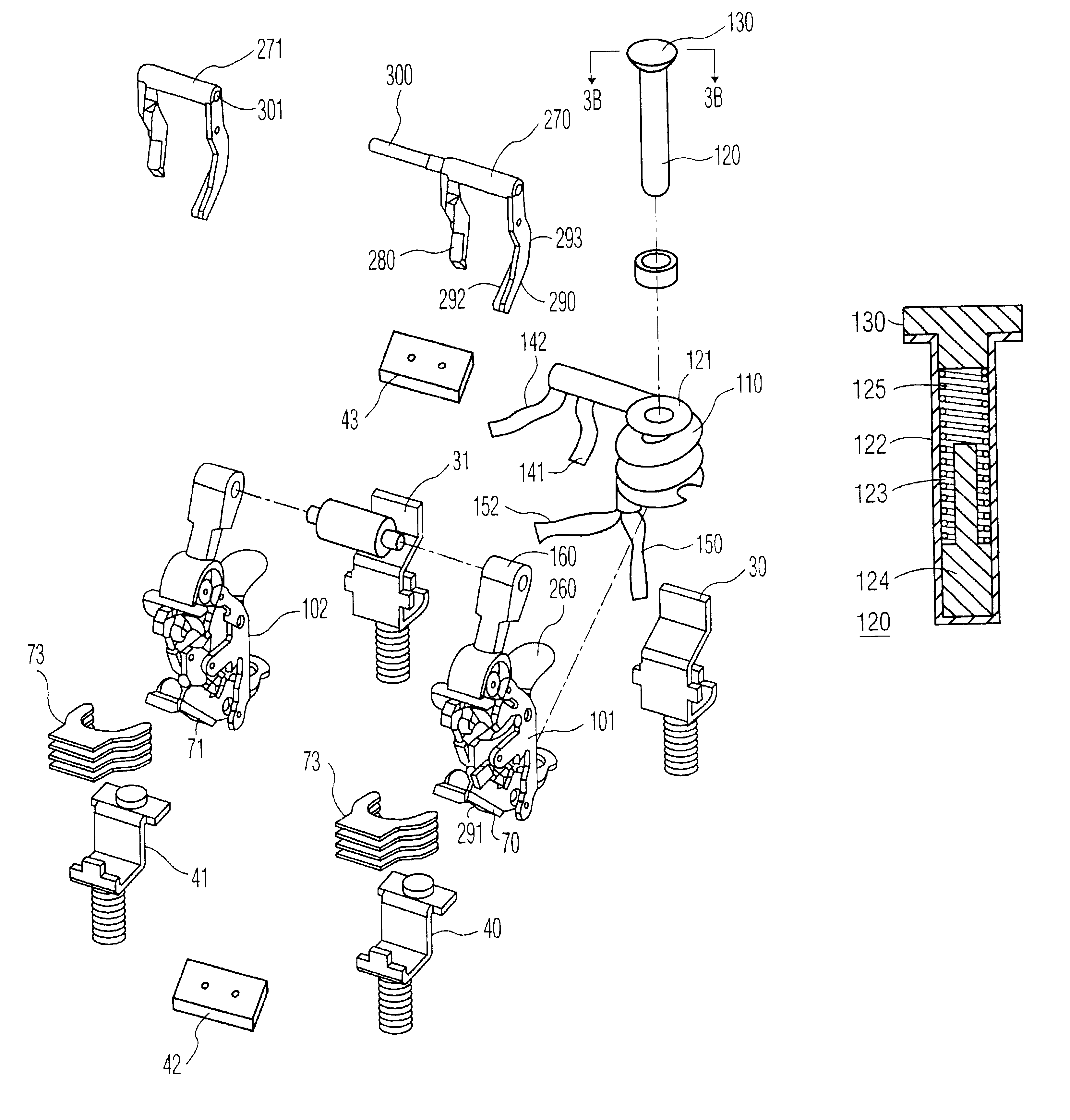Parallel contact circuit breaker
a circuit breaker and contact technology, applied in circuit breaker switches, protective switch details, switches with electromagnetic release, etc., can solve the problems of large load-handling capacity devices that are typically dimensionally larger, possible failure, and the contact resistance of a switch may change significantly
- Summary
- Abstract
- Description
- Claims
- Application Information
AI Technical Summary
Benefits of technology
Problems solved by technology
Method used
Image
Examples
Embodiment Construction
Components of a conventional type single pole circuit breaker are depicted in FIGS. 1, 2A and 2B. See, U.S. Pat. No. 5,293,016, expressly incorporated herein by reference. As shown, the single pole circuit breaker 10 includes an electrically insulating casing 20 which houses, among other things, stationary mounted terminals 30 and 40. In use, these terminals are electrically connected to the ends of the electrical circuit that is to be protected against overcurrents.
As its major internal components, a circuit breaker includes a fixed electrical contact, a movable electrical contact, an electrical arc chute, a slot motor, and an operating mechanism. The arc chute is used to divide a single electrical arc formed between separating electrical contacts upon a fault condition into a series of electrical arcs, increasing the total arc voltage and resulting in a limiting of the magnitude of the fault current. See, e.g., U.S. Pat. No. 5,463,199, expressly incorporated herein by reference. T...
PUM
 Login to View More
Login to View More Abstract
Description
Claims
Application Information
 Login to View More
Login to View More - R&D
- Intellectual Property
- Life Sciences
- Materials
- Tech Scout
- Unparalleled Data Quality
- Higher Quality Content
- 60% Fewer Hallucinations
Browse by: Latest US Patents, China's latest patents, Technical Efficacy Thesaurus, Application Domain, Technology Topic, Popular Technical Reports.
© 2025 PatSnap. All rights reserved.Legal|Privacy policy|Modern Slavery Act Transparency Statement|Sitemap|About US| Contact US: help@patsnap.com



